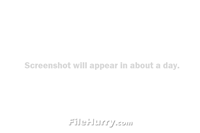-
VersionMicrosoft Remote Desktop 10.2.3012
-
Operating SystemWindows All
-
Download Size82.46 MB
-
Author
-
Screenshots
Desktop emerges as a powerful tool designed to facilitate seamless access to remote computers and resources from anywhere in the world. This review explores the features, functionality, user interface, and overall effectiveness of Microsoft Remote Desktop, shedding light on its capabilities for users seeking efficient remote access solutions.
Overview
Microsoft Remote Desktop is a built-in feature of the Windows operating system, designed to enable users to connect to remote computers or virtual desktops and access applications, files, and resources as if they were sitting in front of the remote machine. It provides a secure and efficient way to work remotely, collaborate with team members, and access critical resources from any location with an internet connection. This review delves into the key aspects of Microsoft Remote Desktop, highlighting its role as a versatile remote access solution.
Features and Functionality
Microsoft Remote Desktop offers a range of features tailored to meet the needs of users:
Remote Access: Users can connect to remote computers or virtual desktops running Windows, macOS, or Linux operating systems, providing flexibility in accessing diverse computing environments.
Remote Desktop Gateway: Microsoft Remote Desktop Gateway allows users to securely connect to remote desktops and resources over the internet using Remote Desktop Protocol (RDP) encryption.
Multi-Platform Support: Microsoft Remote Desktop is available on multiple platforms, including Windows, macOS, iOS, and Android, ensuring cross-platform compatibility and accessibility.
Session Management: The application allows users to manage multiple remote desktop sessions simultaneously, switch between sessions seamlessly, and disconnect or reconnect sessions as needed.
Clipboard Redirection: Microsoft Remote Desktop supports clipboard redirection, enabling users to copy and paste text, images, and files between local and remote desktop environments.
User Interface and Ease of Use
Microsoft Remote Desktop features an intuitive and user-friendly interface designed to simplify the process of connecting to remote desktops and managing remote sessions. The application provides a streamlined experience with easy-to-navigate menus, intuitive controls, and helpful tooltips.
Security and Privacy
Microsoft Remote Desktop prioritizes security and privacy by implementing robust encryption protocols, authentication mechanisms, and access controls to protect remote connections and data transmissions. Users can connect to remote desktops securely without compromising sensitive information or exposing their systems to unauthorized access.
Integration with Windows Ecosystem
Microsoft Remote Desktop seamlessly integrates with other Microsoft products and services, such as Azure Virtual Desktop, Windows Server Remote Desktop Services, and Microsoft 365, providing a cohesive remote access and productivity solution for users and organizations.
Community and Support
Microsoft Remote Desktop benefits from extensive support resources, including documentation, tutorials, forums, and dedicated support channels, to assist users with installation, configuration, and troubleshooting issues. The active user community contributes valuable insights and tips to enhance the Microsoft Remote Desktop experience for all users.
Microsoft Remote Desktop stands as a versatile and reliable solution for remote access and connectivity in today's interconnected world. With its robust features, cross-platform compatibility, security enhancements, and integration with the Windows ecosystem, Microsoft Remote Desktop offers users a convenient and efficient way to access remote desktops, applications, and resources from anywhere, at any time. Whether used for remote work, IT administration, or collaboration purposes, Microsoft Remote Desktop provides the tools and flexibility to enhance productivity and connectivity in diverse computing environments.


 Claws Mail
Claws Mail Betternet VPN
Betternet VPN Norton Definitions
Norton Definitions LonelyScreen
LonelyScreen LogMeIn
LogMeIn LG Smart
LG Smart KiTTY portable
KiTTY portable